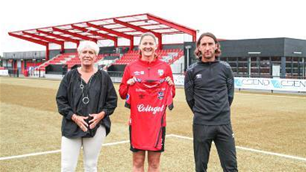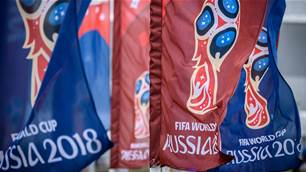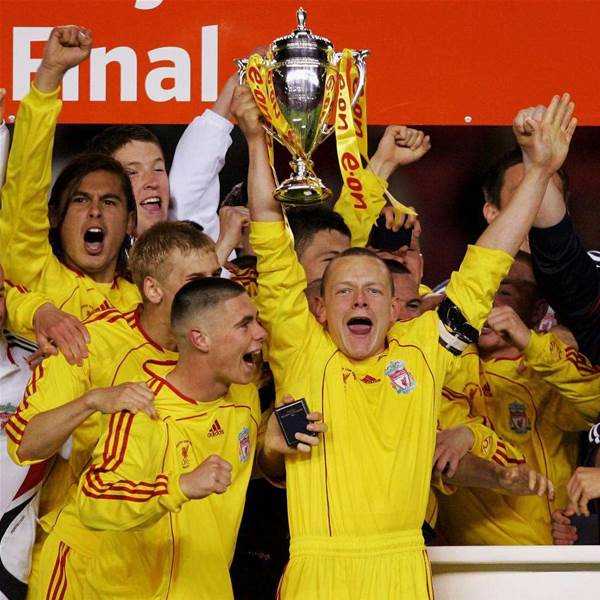In the second of our four-part series, we meet the Europeans who are leading the way in youth development.
Page 3 of 3 | Single page
The year 1995 was a great one for Ajax, but a grave one for Dutch football. On May 25 at the Ernst Happel Stadium in Vienna, Patrick Kluivert’s 85th-minute goal against AC Milan earned Ajax their first European Cup in 22 years. Louis van Gaal’s side, who had won the UEFA Cup three years before, contained eight homegrown players. Seven months later, though, the world changed forever. When Belgian footballer Jean-Marc Bosman won his landmark ruling in 1995, the floodgates were flung wide open for out-of-contract players in the European Union to change clubs without a transfer fee. All of a sudden it was almost
impossible for all but the richest clubs to hold on to their best players beyond the terms of their existing deals.
Within two years of that Champions League triumph in Vienna, seven of the Ajax players had left to play in England, Spain or Italy. It had happened before, of course. After their hat-trick of European titles in the 1970s coach Rinus Michels and the two crucial Johans, Cruyff and Neeskens, were plying their trade in Barcelona. The difference with the Bosman ruling was that it gave an unprecedented freedom to all professional players.
“When I left Holland to play in England I was 27 and already a Dutch international,” says Arnold Muhren, the former Ajax, Ipswich and Manchester United midfielder who is now coach of Ajax’s under-14 side. “These days the players are leaving at 17, 18 and 19.” Muhren points to Liverpool’s recent signing of 18-year-old Ajax striker Jordy Brouwer as a typical consequence of the Bosman ruling. “He won’t succeed in England,” says Muhren with a hint of annoyance in his voice. “He’s a good player, but he won’t be playing in the first team. He’s so young and now he’s in country with a completely different culture, so he’ll be homesick. He’s gone for the money and nothing else. We need to give these players better and longer contracts so at least if they want to leave we can get a transfer fee for them. But it all comes down to money.”
Another consequence of the Bosman ruling and the inexorable rise of the Champions League is the increasing gap between the rich and poor clubs. Ajax’s annual turnover is less than £50 million ($118m), Manchester United’s is £165 million ($388m). The new television deal for Premiership football will only widen that gap. In a typical display of Dutch resourcefulness the Amsterdam club have wrestled with the new challenges facing them and have attempted various changes in strategy. Ajax have joined the Stock Exchange, dabbled in ideas such as forming a North Atlantic League, extended their area of influence in the US and Africa and gambled on buying players on the cheap from Eastern Europe. But Muhren believes Ajax and the other Dutch clubs must stick to what they do best – nurturing talent.
“There are now 100 players in the Dutch league who learnt their trade at Ajax,” says Muhren. “What we are doing is good for Dutch football and, for me, every penny spent on developing players outside of Holland is a waste. We have a satellite club, Ajax Cape Town, but the only decent player to come from there is Steven Pienaar. There’s no doubt that it’s so much easier for us to mould and coach a Dutch player than a player from South Africa or Ghana. They have a different mentality and I think in Norway, Sweden and Denmark they would say the same thing.”
Johan Cruyff believes Holland is no longer producing the kind of skilful and exciting players that graced his generation. Unsurprisingly, his voice holds a lot of sway in the Low Countries, but on this subject he’s in a minority. “Cruyff is always going on about the 1970s,” counters Henk Span. “But if you look at our youth teams from the age of 17 down, they are still winning international tournaments at all levels.”
What has changed is that the age-old Dutch problem of having a shortage of good defenders is being addressed and that requires a new approach which purists like Cruyff despair of. “Before now all players were selected for their skill and speed,” says Span. “So Ajax signing a player like Vito Wormgoor marks a major sea change. He’s big and tall and when he plays the first thing you notice is that he is not skilful. There are a thousand players like him in England – he’s like Tony Adams – but Ajax have never signed a player like this, so it’s a very interesting development.”
In the post-Bosman era, many clubs in Europe gave up on youth development. Why develop your own players only to see them sign for another club when they turn 18? This prompted UEFA to insist clubs include a certain number of homegrown players in their squad. But because the EU does not allow discrimination by nationality, clubs can get around the rules. If anything, the directive has encouraged bigger clubs to poach players from other countries at an even younger age. No prizes for guessing which country is the worst culprit...
“Everywhere I go I see scouts from England,” says Edward Sturing. “Surely it’s better to develop your own players instead of taking ours? England is a big country, with a big passion for football, so surely there are a lot of talented boys there? It’s just lazy, but because they have money they just buy the talent.”
Not that Sturing is downbeat. “We’re very lucky in Holland,” he says. “Maybe if we had lots of money and a big population we wouldn’t work so hard on developing players. But that is why our national team is number six in the world.”
England, meanwhile, are two places lower and the two countries’ records at major tournaments in the last 20 years is also worth considering. In the European Championships, Holland have one title and have reached three semi-finals; England have made it to one semi-final. Their World Cup records are level, with one semi-final apiece, but with populations of 60 million and 15 million, it’s not exactly comparing like for like.
It seems that English clubs are unable or unwilling to put their efforts into developing homegrown talent, and instead adopt the role of football imperialists, determined to assert their influence around the globe. PSV Eindhoven are morphing into a feeder club for Chelsea, Arsenal have Belgian side Beveren, while Liverpool are tightening their grip on Antiguoko.
Just as rising sea levels are giving Holland’s landscape planners headaches, the globalisation of the game in the post-Bosman era is giving Dutch football even bigger obstacles. But they have a plan. Before 2011, Ajax want to increase turnover by six percent every year, return to the top 16 of clubs in Europe and win the Dutch championship once every two years. The club’s main ambition, though, is to win the Champions League again.
“In the mid-1960s nobody in the world would have believed that Ajax could win the European Cup,” says David Endt, former Ajax player and current team manager. “But to everyone’s amazement we won it three times. In the 1980s people were again saying Ajax could never win a European title again, but in 1987 we won the Cup Winners’ Cup, in 1992 we won the UEFA Cup and in 1995 we won the Champions League. Now we are in a period where everybody is again saying we won’t succeed in Europe. But this club will always find a way to spring a surprise.”
If they do return to the top of the European game it will not be achieved by purchasing success, but by making the most of the talent on their doorstep. As they say in Holland “No Youth, No Future.”
Get part three of this series in the September issue of the mag, in which we'll look at youth development in English football. The issue hits the newsstands on August 15.
impossible for all but the richest clubs to hold on to their best players beyond the terms of their existing deals.
Within two years of that Champions League triumph in Vienna, seven of the Ajax players had left to play in England, Spain or Italy. It had happened before, of course. After their hat-trick of European titles in the 1970s coach Rinus Michels and the two crucial Johans, Cruyff and Neeskens, were plying their trade in Barcelona. The difference with the Bosman ruling was that it gave an unprecedented freedom to all professional players.
“When I left Holland to play in England I was 27 and already a Dutch international,” says Arnold Muhren, the former Ajax, Ipswich and Manchester United midfielder who is now coach of Ajax’s under-14 side. “These days the players are leaving at 17, 18 and 19.” Muhren points to Liverpool’s recent signing of 18-year-old Ajax striker Jordy Brouwer as a typical consequence of the Bosman ruling. “He won’t succeed in England,” says Muhren with a hint of annoyance in his voice. “He’s a good player, but he won’t be playing in the first team. He’s so young and now he’s in country with a completely different culture, so he’ll be homesick. He’s gone for the money and nothing else. We need to give these players better and longer contracts so at least if they want to leave we can get a transfer fee for them. But it all comes down to money.”
Another consequence of the Bosman ruling and the inexorable rise of the Champions League is the increasing gap between the rich and poor clubs. Ajax’s annual turnover is less than £50 million ($118m), Manchester United’s is £165 million ($388m). The new television deal for Premiership football will only widen that gap. In a typical display of Dutch resourcefulness the Amsterdam club have wrestled with the new challenges facing them and have attempted various changes in strategy. Ajax have joined the Stock Exchange, dabbled in ideas such as forming a North Atlantic League, extended their area of influence in the US and Africa and gambled on buying players on the cheap from Eastern Europe. But Muhren believes Ajax and the other Dutch clubs must stick to what they do best – nurturing talent.
“There are now 100 players in the Dutch league who learnt their trade at Ajax,” says Muhren. “What we are doing is good for Dutch football and, for me, every penny spent on developing players outside of Holland is a waste. We have a satellite club, Ajax Cape Town, but the only decent player to come from there is Steven Pienaar. There’s no doubt that it’s so much easier for us to mould and coach a Dutch player than a player from South Africa or Ghana. They have a different mentality and I think in Norway, Sweden and Denmark they would say the same thing.”
Johan Cruyff believes Holland is no longer producing the kind of skilful and exciting players that graced his generation. Unsurprisingly, his voice holds a lot of sway in the Low Countries, but on this subject he’s in a minority. “Cruyff is always going on about the 1970s,” counters Henk Span. “But if you look at our youth teams from the age of 17 down, they are still winning international tournaments at all levels.”
What has changed is that the age-old Dutch problem of having a shortage of good defenders is being addressed and that requires a new approach which purists like Cruyff despair of. “Before now all players were selected for their skill and speed,” says Span. “So Ajax signing a player like Vito Wormgoor marks a major sea change. He’s big and tall and when he plays the first thing you notice is that he is not skilful. There are a thousand players like him in England – he’s like Tony Adams – but Ajax have never signed a player like this, so it’s a very interesting development.”
In the post-Bosman era, many clubs in Europe gave up on youth development. Why develop your own players only to see them sign for another club when they turn 18? This prompted UEFA to insist clubs include a certain number of homegrown players in their squad. But because the EU does not allow discrimination by nationality, clubs can get around the rules. If anything, the directive has encouraged bigger clubs to poach players from other countries at an even younger age. No prizes for guessing which country is the worst culprit...
“Everywhere I go I see scouts from England,” says Edward Sturing. “Surely it’s better to develop your own players instead of taking ours? England is a big country, with a big passion for football, so surely there are a lot of talented boys there? It’s just lazy, but because they have money they just buy the talent.”
Not that Sturing is downbeat. “We’re very lucky in Holland,” he says. “Maybe if we had lots of money and a big population we wouldn’t work so hard on developing players. But that is why our national team is number six in the world.”
England, meanwhile, are two places lower and the two countries’ records at major tournaments in the last 20 years is also worth considering. In the European Championships, Holland have one title and have reached three semi-finals; England have made it to one semi-final. Their World Cup records are level, with one semi-final apiece, but with populations of 60 million and 15 million, it’s not exactly comparing like for like.
It seems that English clubs are unable or unwilling to put their efforts into developing homegrown talent, and instead adopt the role of football imperialists, determined to assert their influence around the globe. PSV Eindhoven are morphing into a feeder club for Chelsea, Arsenal have Belgian side Beveren, while Liverpool are tightening their grip on Antiguoko.
Just as rising sea levels are giving Holland’s landscape planners headaches, the globalisation of the game in the post-Bosman era is giving Dutch football even bigger obstacles. But they have a plan. Before 2011, Ajax want to increase turnover by six percent every year, return to the top 16 of clubs in Europe and win the Dutch championship once every two years. The club’s main ambition, though, is to win the Champions League again.
“In the mid-1960s nobody in the world would have believed that Ajax could win the European Cup,” says David Endt, former Ajax player and current team manager. “But to everyone’s amazement we won it three times. In the 1980s people were again saying Ajax could never win a European title again, but in 1987 we won the Cup Winners’ Cup, in 1992 we won the UEFA Cup and in 1995 we won the Champions League. Now we are in a period where everybody is again saying we won’t succeed in Europe. But this club will always find a way to spring a surprise.”
If they do return to the top of the European game it will not be achieved by purchasing success, but by making the most of the talent on their doorstep. As they say in Holland “No Youth, No Future.”
Get part three of this series in the September issue of the mag, in which we'll look at youth development in English football. The issue hits the newsstands on August 15.
Related Articles

Agent taking Aussies to Europe says 'doom and gloom' unfounded

Matildas veteran seals French move













